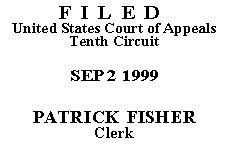

| UNITED STATES OF AMERICA, |
|
Plaintiff Benitez-Longoria appeals his conviction of possession with intent to distribute more than 500 grams of cocaine and aiding and abetting in violation of 21 U.S.C. §§ 841(a)(1) and (b)(1)(B) and 18 U.S.C. § 2. He argues that sufficient evidence did not exist for a jury to find that he had actual or constructive possession of the drugs found secreted in the battery of the car he drove. We AFFIRM.
Defendant drove into a border patrol checkpoint near Las Cruces, New Mexico on July 1, 1997. Despite both he and his passenger having the proper immigration documents, United States Border Patrol Agent Pouliot described defendant as "extremely, extremely nervous, extremely." Agent Pouliot stated that defendant avoided eye contact, continually revved the motor as if in a hurry, and shook violently. Agent Pouliot asked who owned the vehicle he drove, and defendant hesitated, according to Agent Pouliot, as if trying to think of what to say. Agent Pouliot requested permission for a narcotic detecting canine to search the vehicle, and Mr. Benitez-Longoria consented. The dog alerted to the front of the vehicle, and a subsequent search uncovered 7.02 pounds of cocaine hidden in the car battery.
Defendant asserts that the government introduced insufficient evidence to prove that he knew he possessed the cocaine. He claims he did not know of the cocaine's presence. He emphasizes that he did not own nor have sole possession of the car and that the cocaine was very well hidden. "[I]n reviewing the sufficiency of the evidence to support a jury verdict, this court must review the record de novo and ask only whether, taking the evidence both direct and circumstantial, together with reasonable inferences to be drawn therefrom in the light most favorable to the government, a reasonable jury could find the defendant guilty beyond a reasonable doubt." United States v. Voss, 82 F.3d 1521, 1524-25 (10th Cir. 1996) (internal quotation marks and citations omitted); see also United States v. Lazcano-Villalobos, 175 F.3d 838, 843 (10th Cir. 1999). "We do not use this evaluation as a chance to second-guess the jury's credibility determinations, nor do we reassess the jury's conclusions about the weight of the evidence presented." United States v. Yoakum, 116 F.3d 1346, 1349 (10th Cir. 1997) (internal quotation marks and citation omitted); accord, Lazcano-Villalobos, 175 F.3d at 843.
The government argues that it presented sufficient evidence from which a jury could conclude that defendant constructively possessed the cocaine. "A person constructively possesses contraband when he or she knowingly holds ownership, dominion or control over the object and premises where it is found." Lazcano-Villalobos, 175 F.3d at 843; accord United States v. Valadez-Gallegos, 162 F.3d 1256, 1262 (10th Cir. 1998). "Exclusive possession of the premises supports an inference of constructive possession. However, joint occupancy of a premises cannot sustain such an inference." Valadez-Gallegos, 162 F.3d at 1262; see also Lazcano-Villalobos, 175 F.3d at 843. "To prove constructive possession where there is joint occupancy, the government must present direct or circumstantial evidence to show some connection or nexus individually linking [defendant] to the contraband." Lazcano-Villalobos, 175 F.3d at 843; accord Valadez-Gallegos, 162 F.3d at 1262. "While caution must be taken that the conviction not be obtained by piling inference on inference, an inference of constructive possession is reasonable if the conclusion flows from logical and probabilistic reasoning. Thus, the government must present evidence supporting at least a plausible inference [defendant] knew of the contraband." Lazcano-Villalobos, 175 F.3d at 843 (internal citations and quotation marks omitted).
Here, ample evidence exists from which a jury could have found defendant knew of the cocaine. Agent Pouliot testified that Benitez was extremely nervous during routine questioning. Eventually, according to Agent Pouliot, his whole body shook to such a degree that agents fifteen feet away observed his nervous reaction. Agent Pouliot also testified that when he informed Mr. Benitez-Longoria that he knew drugs were contained in the car, defendant yelled, "Go ahead and take it out," at the top of his lungs. When informed that the agents had found the cocaine, defendant just dropped his head.
In addition to this evidence, Mr. Benitez-Longoria gave conflicting stories at the time of the seizure and at trial as to who owned the vehicle, his travel plans, and the reasons for the trip. Finally, the jury heard evidence that only three months prior to the incident involved here, defendant had been arrested for possession with intent to distribute marijuana. In that case, officials found marijuana hidden in a secret smuggling compartment of the car he was driving. Defendant claimed in that case he had no knowledge of the hidden drugs. The jury could properly use this evidence to support a finding of knowledge. See id. at 846.
Thus, viewing the evidence in the light most favorable to the government, sufficient evidence exists to support the jury's guilty verdict. The government presented evidence supporting at least a probable inference that defendant knew of the cocaine hidden in the battery. We AFFIRM.
ENTERED FOR THE COURT,
Deanell Reece Tacha
Circuit Judge
*.This order and judgment is not binding precedent, except under the doctrines of law of the case, res judicata, and collateral estoppel. This court generally disfavors the citation of orders and judgments; nevertheless, an order and judgment may be cited under the terms and conditions of 10th Cir. R. 36.3.